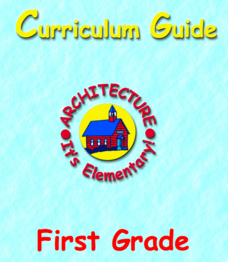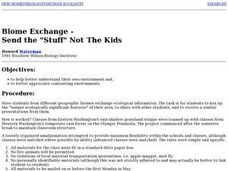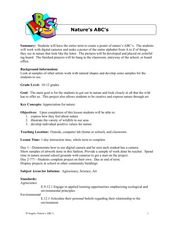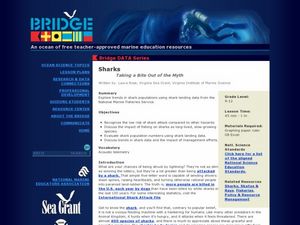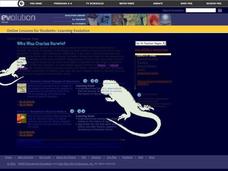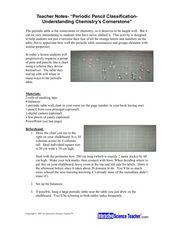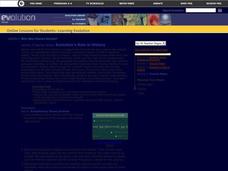PBS
Dear Pen Pal
Explore cultures from around the world with an engaging pen pal resource. Through a series of classroom activities and written correspondence, children learn about the favoritec pastimes, schooling, geography, and weather that is...
American Institute of Architects
Architecture: It's Elementary!—First Grade
Build an interest and appreciation for architecture in your young learners with this fun 10-lesson art unit. Engaging children in using their five senses, the class first observes the environment around them, paying...
NASA
Einstein and His Times
Scholars research and present on the historical happenings of 1919. After sharing their findings, pupils debate about how Congress dealt with the moral issues of the time. The evaluation asks learners to write a persuasive...
Curated OER
Deformed Frogs! - The Parasite Hypothesis
This project provides students the opportunity to investigate parasites as a possible cause of the observed frog deformities. It asks students to view web-based evidence and interpret whether it supports the parasite hypothesis. Students...
Curated OER
Class Letter of Introduction
Students follow guidelines to collectively draft a class letter that introduces their school to the rest of the participants in an online science experiment about water quality. They post the letter online as part of the larger unit.
Curated OER
Biome Exchange - Send the "Stuff" Not The Kids
Students exchange ecological information with students from different geographic biomes. They box up the "unique ecologically significant features" of their area, send the box to another class in another area and then receive a similar...
Curated OER
Nature's ABC's
Students will recognize objects in nature that are similar in shape to the letters of the alphabet. In this digital camera lesson, students will find objects in nature that look like letters of the alphabet. They will create a poster of...
Curated OER
Fieldtrip Chaperone
In this fieldtrip chaperone worksheet, the teacher completes a letter to the chaperone, which includes the chaperone's name, the location of the fieldtrip, when to arrive, the date, and the cost. There are four copies of the letter per...
NASA
Discovering the Milky Way
What do you call a tiny collection of galaxies? A puny-verse! Young scholars graph data gathered by scientists studying Cepheids. They attempt to identify a relationship between the variables through standard and logarithmical...
Curated OER
Hey - It's a Rainy Forest Out There!
Elementary schoolers take part in a very good lesson which has them watch video, conduct experiments, complete hands-on activities, and work in cooperative groups. The educationally-rich activities are clearly-explained, and the group...
Curated OER
Sharks ~ Taking a Bite Out of the Myth
The first thing to know about this lesson is that the commercial fisheries data for the activity no longer seems to be available. That being said, there are fascinating links to other websites, some about the comparative odds of being...
Curated OER
Who Was Charles Darwin?
Students complete two activities to study Charles Darwin's Theory of Natural Selection. They read Darwin's journal from the voyage of the Beagle and look at the scientific ideas that influenced the development of his theory.
Curated OER
Working with Questions
Students explore questions in a scientific context. They consider what makes questions testable. After reading short scenarios, students come up with their own testable questions about the reading.
Curated OER
Contribution to the Beautification of Parma
First graders participate in beautification project in their local area. For this community service lesson, 1st graders plan and prepare a flower planting project for a low income area of their city. They practice arranging flowers in...
Curated OER
Dinosaur Days
Students investigate the age of dinosaurs while examining the characteristics of three kinds of dinosaurs. They examine plant eaters, meat eaters, and flying dinosaurs while determining how to classify things. They rotate through centers...
Curated OER
Periodic Pencil Classification-Understanding Chemistry's Cornerstone
Students study the periodic table and the elements. In this chemistry lesson students complete a group lab activity and relate it to the periodic table.
Curated OER
The Aerial Age
Students infer America's attitude towards aviation in the early 1900s. In this The Aerial Age lesson, students analyze early 1900s literature, music, advertisements, and popular culture in reference to aviation. Students represent their...
Curated OER
I Can See You
Second graders explore living without sight. In this senses lesson, 2nd graders review the different senses and what they use for each sense. Students discuss what it would be like to not be able to see and they read a story about a...
Curated OER
Ugly? Says Who?
Students explore biology by writing animal poetry in class. In this animal characteristics lesson, students research the Internet for facts about an "ugly" animal such as a bug or small critter. Students complete worksheets about animal...
Curated OER
Can I Take Action?
Pupils create a solution to a problem related to the environment. They work together to develop the plan and pitch the plan to their class. They discuss the action steps taken in a story they were read.
Curated OER
Who was Charles Darwin?
Students trace major developments in the history of evolutionary science. They
discuss the connections between major events in world history and major events in the development of evolutionary thought by creating timelines.

